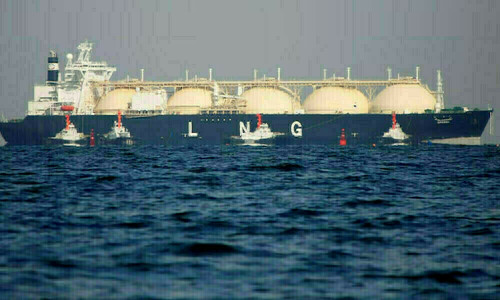LNG Imports in Asia and Europe Show Diverging Trends
Launceston: Liquefied natural gas (LNG) import activity in Asia showed signs of sluggishness in April. Meanwhile, Europe’s LNG demand has begun its expected seasonal decline following the peak winter consumption period.
Asia’s LNG Imports
According to data from Kpler, Asia, the world’s largest LNG importer, is projected to receive 22.40 million metric tons of LNG in April. This figure represents a slight decrease from the 22.68 million tons recorded in March. Factoring in the difference in the number of days between the two months, the imports are marginally higher on a daily basis.
However, this volume is less than the 23.32 million tons imported during April of the previous year. The primary contributor to this decline is reduced import volume from China, the world’s leading LNG purchaser.
Kpler’s estimates indicate that China’s April imports will be 4.77 million tons, a decrease from 4.89 million tons in March and a substantial 27% drop compared to the 6.5 million tons imported in April 2024.
Assessing the data on a daily basis reveals that China’s imports in April are at their lowest level since October 2022. This slump in demand is attributed to elevated spot prices prevailing when the April-arriving shipments were negotiated.
Impact of Price and Trade Dynamics
Spot LNG prices for North Asia reached a year-to-date high of $16.10 per million British thermal units (mmBtu) in mid-February, marking a 94% increase from the 2024 low of $8.30 recorded in March of the previous year. Though prices have since retreated to $11.80 per mmBtu by late April, LNG’s competitiveness in the Chinese market remains challenged.
The ongoing trade tensions between China and the United States are also impacting China’s LNG demand. Increased tariffs imposed by both countries have disrupted trade flows. Notably, China has not imported any LNG from the United States, the world’s largest exporter, in the last two months, putting an end to trade which saw 4.32 million tons, or 5.5%, of China’s total, imported from the US in 2024.
US LNG Exports Find New Markets
The United States has successfully diverted its LNG exports to other Asian nations. April imports increased to 1.48 million tons, compared to 730,000 tons in March. Key buyers of US LNG include Japan, South Korea, and India, countries that may be willing to increase US energy purchases as part of ongoing trade negotiations.
European LNG Imports
The United States continues to be a primary LNG supplier to Europe, with Kpler estimating April imports at 5.88 million tons. This is down from the record 7.04 million tons in March, during a period when Europe was actively replenishing inventories depleted by winter demand.
Although April’s US LNG imports into Europe are the lowest in four months, they remain significantly above the 2024 monthly average of 3.76 million tons. US LNG has become increasingly crucial for Europe, accounting for 55% of total imports thus far in 2025, according to Kpler.
Total LNG imports for Europe in April are estimated at 10.44 million tons, a decrease from 12.74 million tons in March, which was the second-highest month on record. While Europe’s LNG imports typically decline after winter, the overall import volume has seen a structural increase after the reduction in Russian pipeline gas supplies following the invasion of Ukraine in early 2022.
April’s LNG imports are 1.42 million tons, or 15.7%, higher than in April of the previous year, with the United States accounting for most of the increase, with April 2025 imports being 1.79 million tons higher than the same month last year.
LNG imports to Europe from Russia have seen a slight decrease, with April arrivals totaling 1.38 million tons, compared to 1.60 million in the same month of 2024.
A key challenge for European LNG importers is the desire to eliminate Russian cargoes while still meeting energy demand. While the United States is a logical alternative, most LNG importers, excluding China, are seeking to increase US energy purchases, raising the possibility of supply shortages despite new production coming online this year.



Comments (0)
No comments yet. Be the first to comment!
Leave a Comment